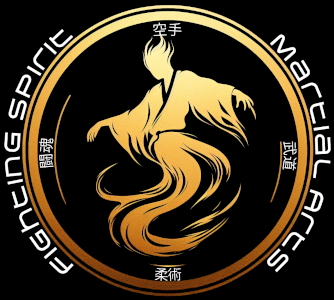Introduction

Born in 1898 in Okinawa, Japan, Dr. Tsuyoshi Chitose was an influential figure in the world of martial arts. He was not only a highly skilled martial artist but also an accomplished medical doctor. His background in medicine and martial arts led him to develop his own unique style called Chito-Ryu Karate, which integrates traditional Okinawan and Japanese martial arts techniques with principles from his medical expertise.
Dr. Chitose’s contributions to martial arts have had a significant and lasting impact on the martial arts community. Through the development of Chito-Ryu Karate and his dedication to teaching and promoting his style, Dr. Chitose has inspired generations of martial artists and instructors, who continue to carry forward his legacy. His work serves as a testament to the power of discipline, innovation, and continuous learning in the pursuit of excellence in martial arts.
Early Life and Education
Dr. Tsuyoshi Chitose was born on October 18, 1898, in the city of Naha, Okinawa, Japan. Okinawa, renowned as the birthplace of karate, has a rich history of martial arts that dates back centuries. Growing up in this environment, young Chitose was exposed to the martial arts culture that thrived around him, which inevitably influenced his passion for karate.
As a child, Chitose showed an early inclination toward physical activities and sports. Besides martial arts, he enjoyed playing traditional Japanese games and spending time outdoors. He was known to be a disciplined and hardworking young boy, traits that would later prove instrumental in his success as a martial artist and a medical doctor.
Naha, during Chitose’s childhood, was a bustling and vibrant city with a strong sense of community. The city had a mix of both clean and bustling market areas, as well as more serene and well-kept residential neighbourhoods. Chitose’s family was relatively well-to-do, and he enjoyed a comfortable upbringing. However, his parents instilled in him the importance of humility, hard work, and respecting the value of their martial arts heritage.
While Naha was not an overtly tough environment, it was still a place where the practice of martial arts was taken very seriously. The discipline and rigour required to excel in karate were deeply ingrained in the local culture, and Chitose’s exposure to this atmosphere from an early age played a crucial role in shaping his lifelong dedication to martial arts.
Coming from a lineage of prominent martial artists, including his paternal grandfather, Matsumura Sokon, who was a legendary karate master known for his expertise in Shuri-te, one of the original styles of Okinawan karate. Chitose’s father, Chitose Arakaki, also practiced martial arts, further instilling the importance of discipline and tradition in young Chitose’s life. His mother, Matsu, played a supportive role in nurturing her son’s interest and passion for martial arts.
Growing up, Chitose was one of five siblings, including two brothers and two sisters. His brothers, Chitose Yasuhiro and Chitose Minoru, also pursued martial arts, creating a sense of camaraderie and friendly competition among the siblings. The Chitose family placed great importance on the values of hard work, dedication, and perseverance, which were crucial in shaping Dr. Chitose’s martial arts journey.
Throughout his life, Dr. Chitose maintained close relationships with his family members, who continued to support and encourage his martial arts endeavours. His family’s martial arts legacy not only laid the foundation for his own journey in the discipline but also served as a constant source of inspiration and motivation as he went on to develop his unique style, Chito-Ryu Karate.
Dr. Chitose pursued higher education at the Tokyo Medical College, specializing in internal medicine, and graduated in 1928. His medical background greatly influenced his approach to martial arts, as he sought to integrate principles of anatomy, physiology, and biomechanics into his karate techniques. This unique perspective allowed him to develop a martial arts style that emphasized efficiency, safety, and a deeper understanding of the human body in motion.
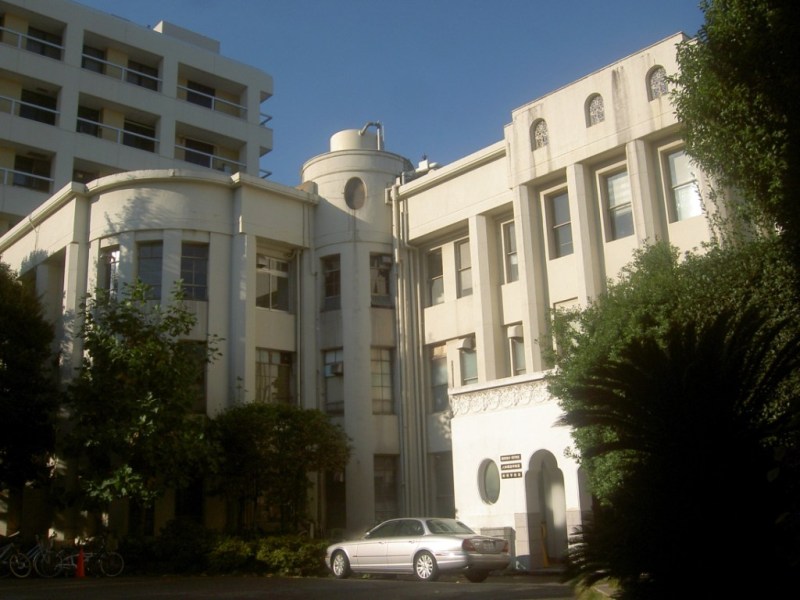
While studying medicine, Dr. Chitose became particularly interested in the relationship between the nervous system, muscular function, and overall health. This fascination further informed his martial arts practice, as he incorporated the concept of kinesiology, the study of human movement, into his teachings. By understanding how muscles and joints work together, he was able to develop techniques that maximized power while minimizing the risk of injury.
Conversely, Dr. Chitose’s extensive martial arts experience helped him to approach medicine with a unique perspective. He recognized the importance of physical fitness, balance, and flexibility in maintaining overall health and well-being. This understanding allowed him to develop comprehensive and effective treatment plans for his patients, often incorporating elements of martial arts training to improve their physical condition and quality of life.
Through his medical education, Dr. Chitose was able to create a holistic approach to martial arts that married physical technique with scientific knowledge. This innovative method provided a solid foundation for the development of his unique style, Chito-Ryu Karate, which continues to inspire martial artists around the world today.
Martial Arts Training and Development
Dr. Tsuyoshi Chitose began his formal karate training at the age of 12, under the tutelage of renowned masters in Okinawa. His first teacher was Aragaki O’sensei (Chitose Arakaki and Aragaki O’sensei are the same person. Aragaki O’sensei is the honorific title given to Chitose Arakaki, Dr. Tsuyoshi Chitose’s father, who was also his first karate teacher), who taught him Naha-te, a traditional Okinawan karate style. Chitose’s early training with Aragaki laid the groundwork for his deep understanding of karate’s fundamentals and principles.
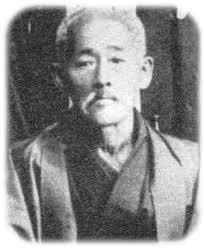
As his skills developed, Chitose sought out further instruction from other prominent karate masters. He trained with Kanryo Higaonna, an expert in the Naha-te tradition, and later with Choyu Motobu, who specialized in Shuri-te, another Okinawan karate style. These experiences exposed Chitose to diverse techniques, stances, and training methods, helping him to form a comprehensive understanding of the art.

Throughout his martial arts journey, Dr. Chitose remained dedicated to expanding his knowledge and expertise. In addition to his in-depth study of Okinawan karate, he explored various other martial arts styles such as judo, kendo, and jujitsu, among others. Dr. Chitose achieved the rank of 4th dan in judo, which is a testament to his skill and dedication to the art. In Kendo, he reached the rank of 2nd dan, demonstrating his proficiency in this discipline as well. Although specific information about his rank in jujitsu is scarce, it is evident that he studied and practiced it to a significant extent.
This cross-disciplinary training allowed him to identify common principles and techniques across different martial arts, which further enriched his understanding of the discipline. As he continued to develop his own unique karate style, Chito-Ryu, Dr. Chitose drew upon his experiences and knowledge from these various martial arts. The blending of concepts from judo, kendo, and jujitsu, among others, contributed to the depth and richness of Chito-Ryu Karate.

While Dr. Chitose primarily focused on the development and promotion of Chito-Ryu Karate, it is likely that he maintained an interest in and continued to practice other martial arts to some extent. This ongoing exploration and study of various disciplines further reinforced the versatility and adaptability that became hallmarks of his martial arts philosophy.
His studies also extended to Chinese martial arts, including White Crane Kung Fu, a style known for its graceful movements and emphasis on internal power. This exposure to a diverse range of martial arts styles enabled Dr. Chitose to develop a broader perspective on the art of self-defense, beyond the bounds of traditional Okinawan karate.
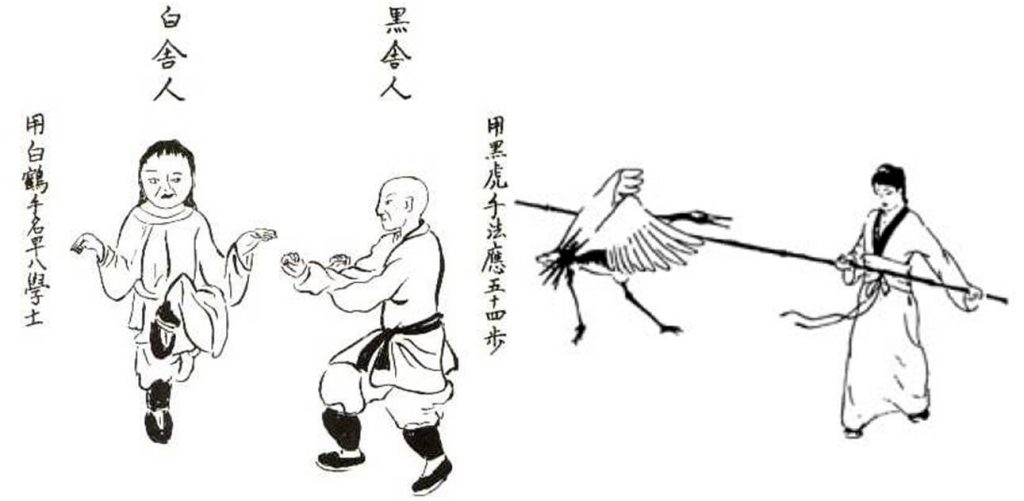
With a solid foundation in various martial arts styles and the principles of anatomy and physiology from his medical background, Dr. Chitose set out to develop his own unique karate style. In 1946, he established Chito-Ryu Karate, which combined elements of the Naha-te and Shuri-te traditions with techniques and principles from other martial arts he had studied, such as Goju-Ryu, White Crane Kung Fu, judo, kendo, and jujitsu.
Chito-Ryu Karate places a strong emphasis on balance, body mechanics, and fluidity of movement. Drawing on the power and strength of traditional Okinawan karate, the grace and precision of White Crane Kung Fu, and the anatomical understanding gained from Dr. Chitose’s medical training, this fusion of knowledge and techniques resulted in a martial arts style that is efficient, safe, and deeply rooted in the understanding of the human body.
Dr. Chitose’s innovative approach to martial arts and the development of Chito-Ryu Karate marked a significant milestone in the evolution of the discipline. By integrating elements from diverse disciplines, such as the principles of leverage, balance, and body mechanics from judo, the precision and discipline of kendo, and the grappling techniques of jujitsu, Chito-Ryu Karate expanded the boundaries of traditional karate and showcased the potential of combining diverse martial arts knowledge and principles.
Today, Chito-Ryu Karate is practiced by thousands of martial artists worldwide, who continue to honour and preserve the legacy of Sensei Dr. Tsuyoshi Chitose. The style stands as a testament to Dr. Chitose’s dedication to the martial arts and his innovative spirit, which blended traditional techniques with modern scientific understanding to create a truly unique and effective discipline.
Establishing the Chito-Kai Organization
In 1952, Dr. Tsuyoshi Chitose founded the Chito-Kai Organization with the primary purpose of promoting and preserving the practice of Chito-Ryu Karate. The organization aimed to create a unified platform for the dissemination of Chito-Ryu teachings, principles, and techniques, ensuring that the style remained true to its founder’s vision while adapting to the needs of its growing community of practitioners.
Under the leadership of Dr. Chitose, the Chito-Kai Organization experienced significant growth, both domestically and internationally. As interest in Chito-Ryu Karate spread beyond Japan, the organization expanded its reach by establishing branches and affiliations in various countries around the world, including the United States, Canada, Australia, and several European nations. Through seminars, demonstrations, and instructor training programs, the Chito-Kai Organization played a crucial role in fostering the global growth of Chito-Ryu Karate.
Chito-Kai in Canada

The expansion of Chito-Ryu Karate into Canada was facilitated by dedicated practitioners who travelled to Japan to train directly under Dr. Chitose. In the early 1960s, Masami Tsuruoka, often referred to as the “Father of Canadian Karate,” played a key role in introducing Chito-Ryu Karate to Canada. He established the first Chito-Ryu dojo in Toronto, which marked the beginning of the style’s growth in the country.
Today, Chito-Ryu Karate has a strong presence in Canada, with numerous dojos and instructors throughout the country. The Canadian Chito-Ryu Karate Association (CCKA) was founded to oversee the development and promotion of Chito-Ryu Karate in Canada. The CCKA organizes national tournaments, training camps, and seminars, providing Canadian practitioners with opportunities to connect, learn, and grow within the Chito-Ryu community.
The Chito-Kai Organization has been instrumental in promoting and preserving the legacy of Dr. Tsuyoshi Chitose and his unique martial arts style. By providing a structured framework for the development and dissemination of Chito-Ryu Karate, the organization ensures that the teachings and values embodied in the style are consistently upheld and passed on to future generations.
Additionally, the Chito-Kai Organization organizes regular events, such as championships and seminars, that bring together Chito-Ryu practitioners from around the world. These events serve as an opportunity for martial artists to share knowledge, learn from one another, and foster a sense of unity and camaraderie within the global Chito-Ryu community.
Sensei Dr. Tsuyoshi Chitose’s Philosophy and Teaching Method
Dr. Chitose’s unique approach to martial arts was deeply rooted in the integration of his medical knowledge with traditional karate techniques. He believed that a comprehensive understanding of anatomy, physiology, and biomechanics was crucial to maximizing the effectiveness and safety of martial arts practice. By combining these scientific principles with his martial arts training, he was able to develop a holistic approach to karate that emphasized efficiency and body awareness in the execution of techniques.
Sensei Dr. Tsuyoshi Chitose strongly believed that martial arts training went beyond physical prowess and technique. He emphasized the importance of character development and the cultivation of moral values, such as integrity, respect, humility, and perseverance. For Chitose, the true essence of martial arts was the lifelong journey of personal growth and self-improvement, both physically and mentally.
Sensei was a strong advocate for discipline and continuous learning in the pursuit of martial arts excellence. He encouraged his students to approach their training with dedication, focus, and a commitment to constantly refining their skills. He believed that the path to mastery was a never-ending journey and that practitioners should always strive to learn, grow, and adapt to new challenges.
While Dr. Chitose deeply respected the traditions and formalities of classical karate, he also recognized the value of embracing new ideas and innovations. His development of Chito-Ryu Karate demonstrates his willingness to blend traditional techniques with modern scientific understanding and principles from other martial arts disciplines. This unique fusion of old and new, along with his emphasis on the importance of preserving the essence of traditional karate, resulted in a martial arts style that is both rooted in history and adaptable to the evolving needs of practitioners.
In summary, Sensei Dr. Tsuyoshi Chitose’s philosophy and teaching method reflect his commitment to the holistic development of martial artists, his respect for tradition, and his willingness to embrace innovation. Through his focus on the integration of martial arts and medicine, character development, discipline, and continuous learning, he has left a lasting impact on the martial arts world and inspired countless practitioners to pursue their own paths of self-improvement and growth.
Impact and Legacy of Sensei Dr. Tsuyoshi Chitose
Dr. Chitose received numerous awards and recognitions for his contributions to the martial arts world throughout his life. In 1968, the All Japan Karate-Do Federation awarded him the prestigious rank of 10th dan, signifying his mastery and expertise in karate. He was also honoured with the title of Hanshi by the same organization, which is the highest title given to a martial artist, reflecting his exceptional skills and dedication to the discipline. Dr. Chitose was widely respected by his peers and was recognized for his innovative approach to martial arts and his development of Chito-Ryu Karate.
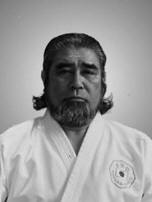
Many of Dr. Chitose’s students went on to become highly accomplished martial artists, further spreading the teachings of Chito-Ryu Karate around the world. Some of his notable students include Masami Tsuruoka, the “Father of Canadian Karate,” and Mamoru Yamamoto, who established the International Chito-Ryu Karate-Do Federation. These individuals, along with countless others, have carried on Dr. Chitose’s legacy and made significant contributions to the development and dissemination of Chito-Ryu Karate.
Dr. Chitose’s innovative approach to martial arts and the establishment of Chito-Ryu Karate has had a lasting impact on the martial arts world. Today, organizations like the Chito-Kai and the International Chito-Ryu Karate-Do Federation work diligently to preserve and promote the teachings and values of Chito-Ryu Karate, ensuring that Dr. Chitose’s legacy continues to thrive in the modern era.
There are numerous accomplished Chito-Ryu practitioners in Canada and across the globe, who continue to carry the torch of Dr. Chitose’s teachings. In Canada, prominent practitioners include Shane Higashi, a direct student of Masami Tsuruoka and a highly respected instructor, and Higashi’s student, Sensei Chris Taneda, who is known for his dedication to the art and the development of his students. Internationally, notable practitioners include Takaaki Fukuda, a highly skilled instructor in Japan, and Paul Enfield, a British Chito-Ryu practitioner who has helped spread the style throughout Europe.
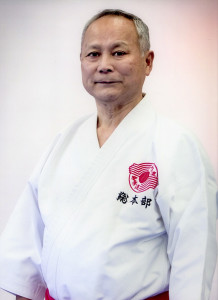


These dedicated martial artists, along with countless others, work to preserve and promote the teachings of Chito-Ryu Karate, ensuring that Sensei Dr. Tsuyoshi Chitose’s profound impact on the martial arts world is felt for generations to come.
Conclusion
Sensei Dr. Tsuyoshi Chitose led an extraordinary life, marked by dedication, innovation, and a relentless pursuit of knowledge. Born in Okinawa, the birthplace of karate, he was surrounded by a rich martial arts culture that inspired his lifelong passion. He built a strong foundation in various martial arts styles, and his medical education provided him with a unique perspective that he integrated into his teachings. Dr. Chitose’s development of Chito-Ryu Karate and the establishment of the Chito-Kai Organization have left an indelible mark on the martial arts world.
The teachings and values of Chito-Ryu Karate continue to inspire and guide martial artists around the globe. Dr. Chitose’s innovative approach, which combines traditional karate with a deep understanding of anatomy, physiology, and other martial arts principles, has stood the test of time and remains relevant in the modern era. His students and their successors have carried on his legacy, ensuring that Chito-Ryu Karate continues to thrive and evolve.
We encourage readers to delve deeper into the world of Chito-Ryu Karate and discover the wealth of knowledge, techniques, and principles that Sensei Dr. Tsuyoshi Chitose has left behind. Whether you are a martial artist, a fitness enthusiast, or simply curious about this unique martial arts style, there is much to be gained from exploring the teachings and legacy of Dr. Chitose.
In conclusion, we pay our humble tribute to O’Sensei Dr. Tsuyoshi Chitose, whose life and work have had a profound impact on the martial arts world. His dedication, wisdom, and an unwavering pursuit of excellence have left a lasting legacy that will continue to inspire and guide martial artists for generations to come. We are honoured to have had the opportunity to share his remarkable story with you.
For more reading on the life and legacy of Sensei Chitose please look for these books:
- “The Essence of Chito-Ryu Karate-Do: The Life and Teachings of Dr. Tsuyoshi Chitose” by Michael A. Colling
- “Chito-Ryu Karate: Tradition and Technique” by Chris Denwood
- “The Chito-Ryu Karate-Do System: A Comprehensive Guide” by Paul Enfield
…or check out these websites:
- International Chito-Ryu Karate-Do Federation: http://www.chitoryu.jp/english/index.html
- Canadian Chito-Ryu Karate Association: https://www.chitoryu.ca
- Chito-Ryu Karate-Do Australia: https://www.chitoryu.com.au
